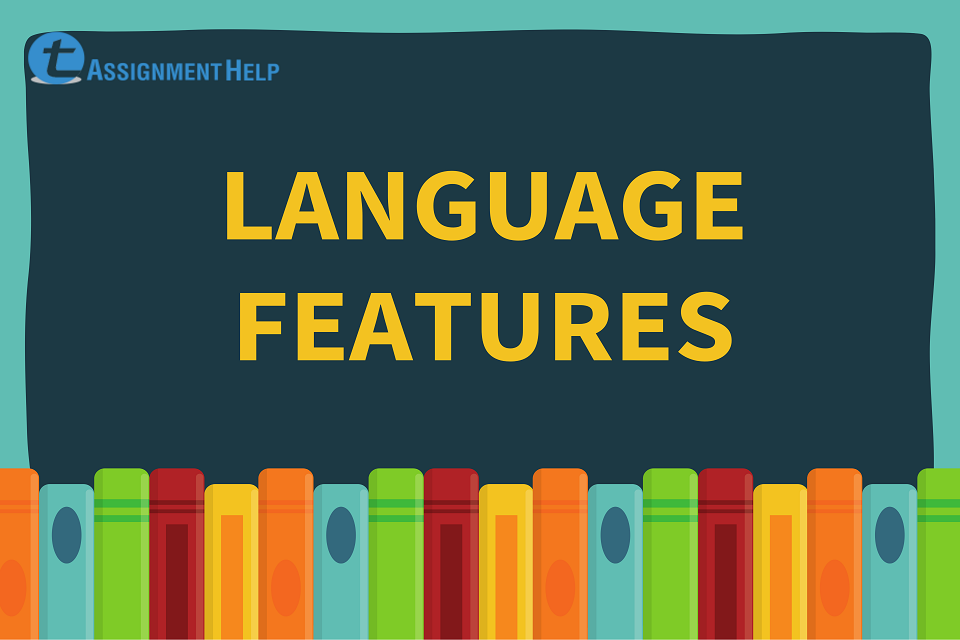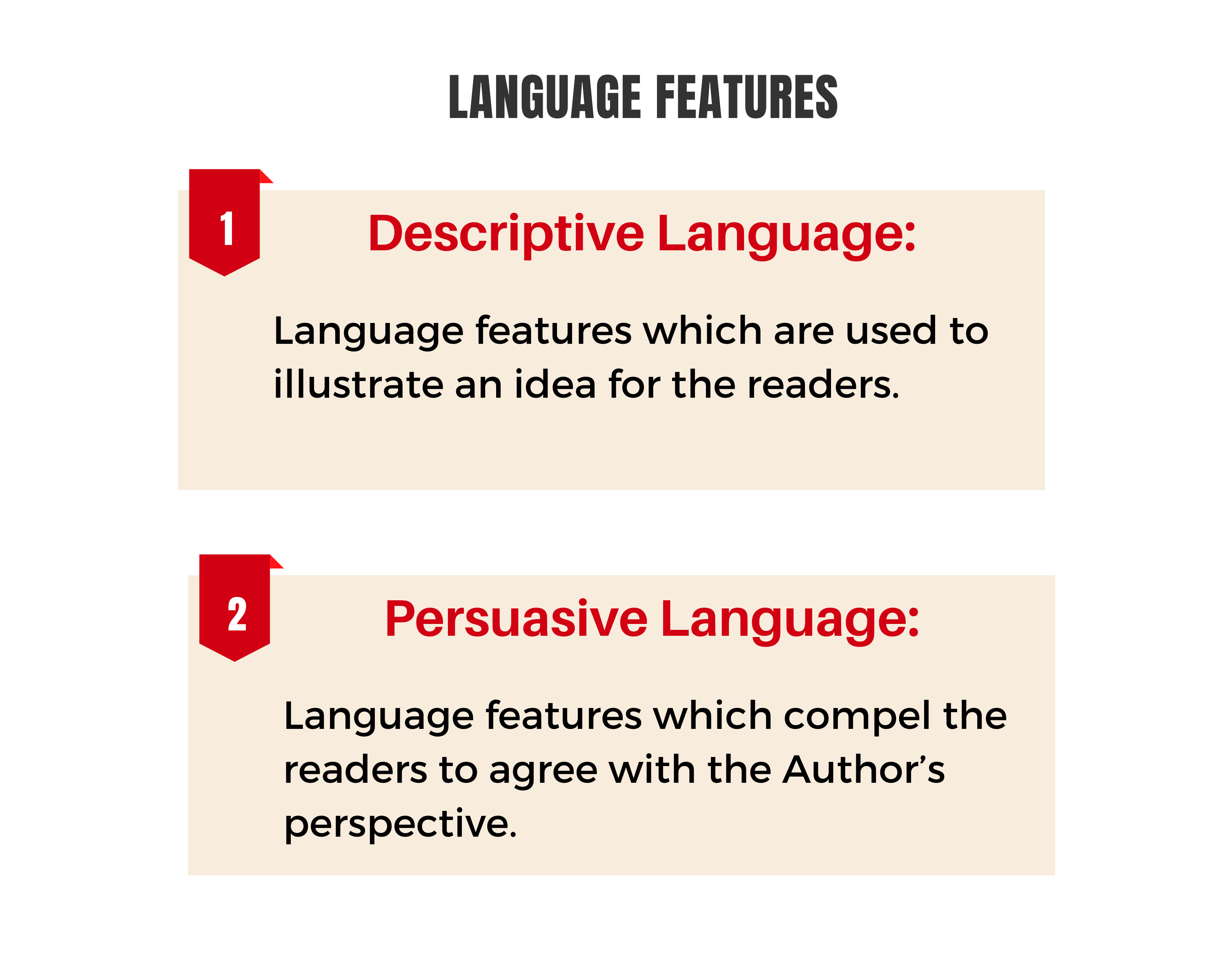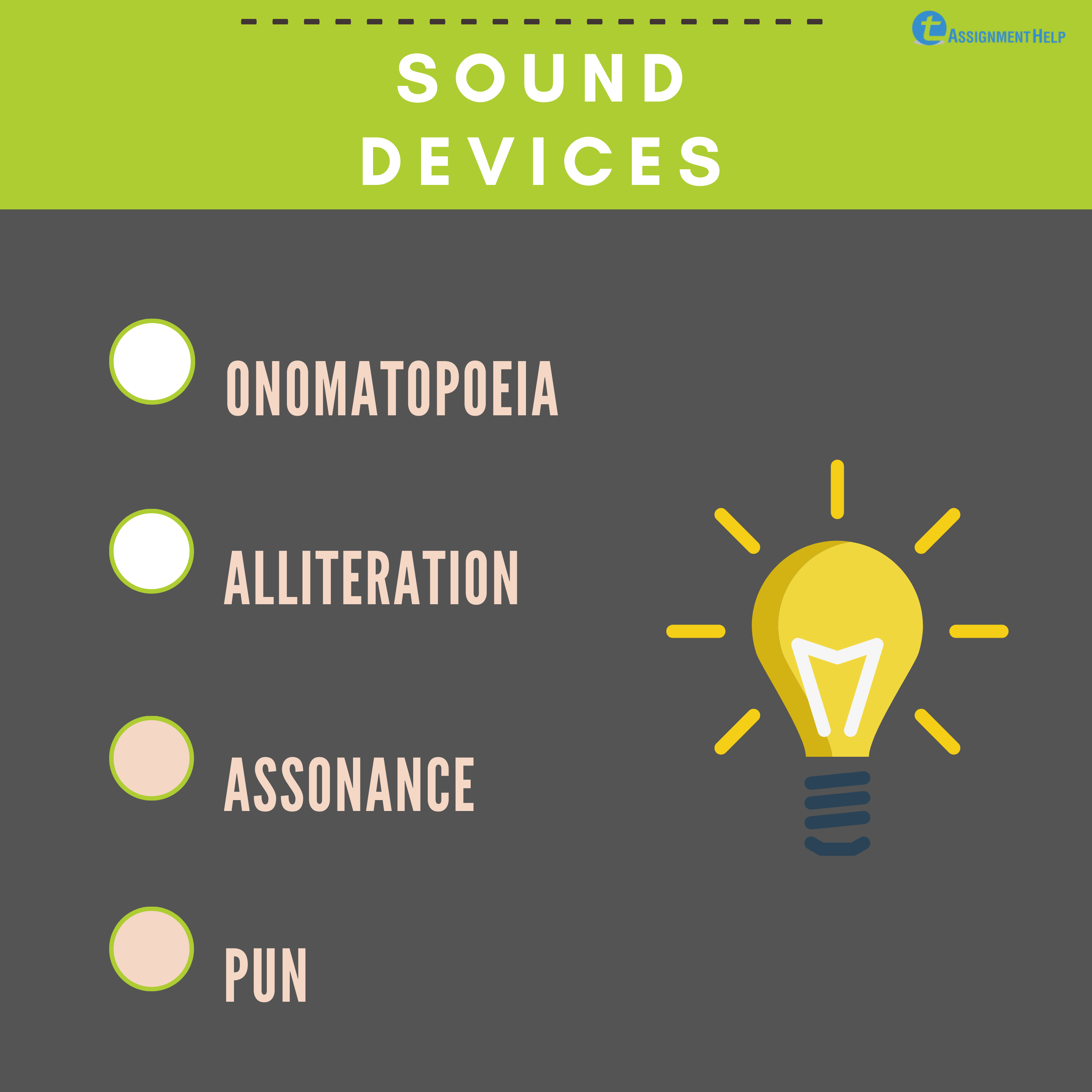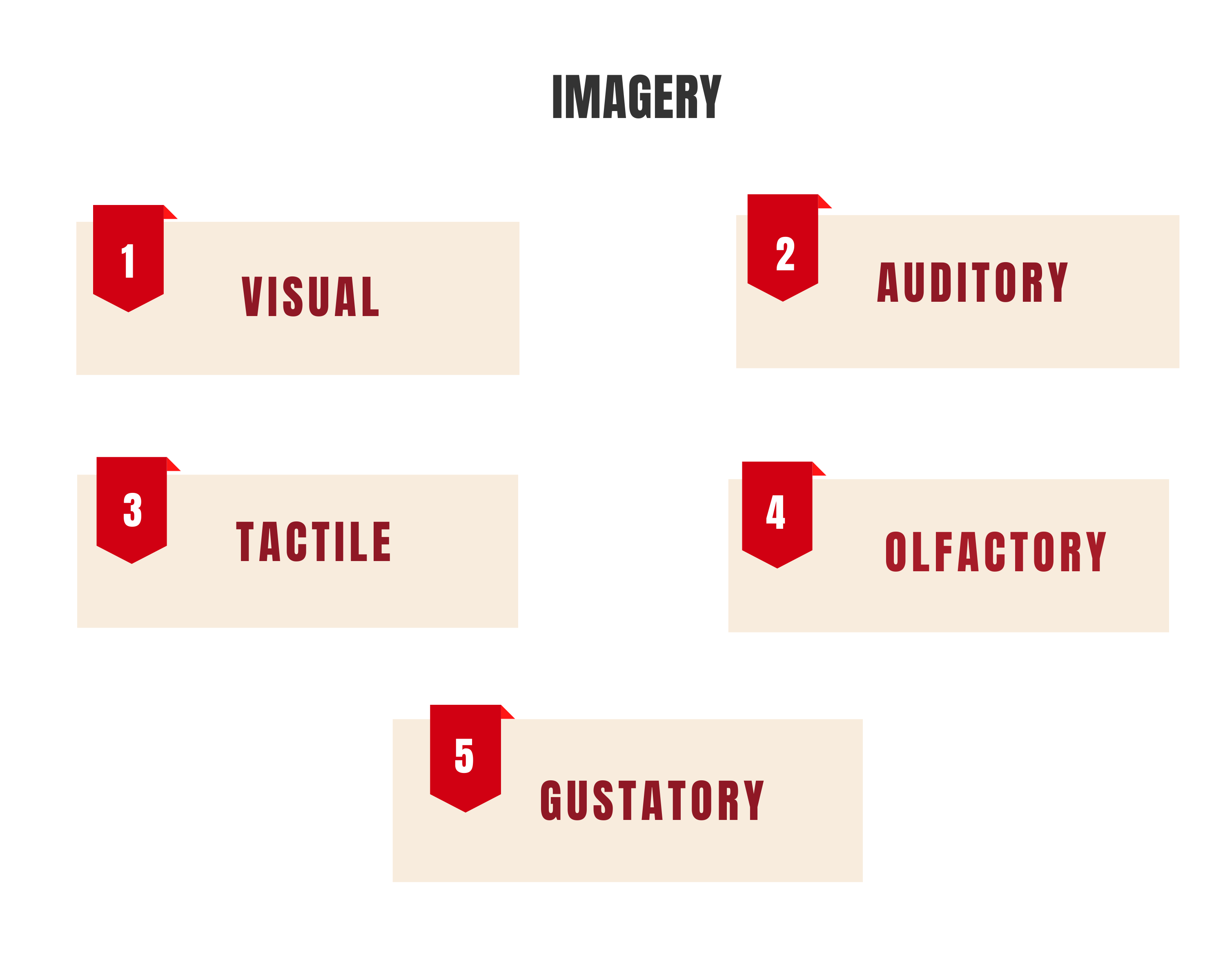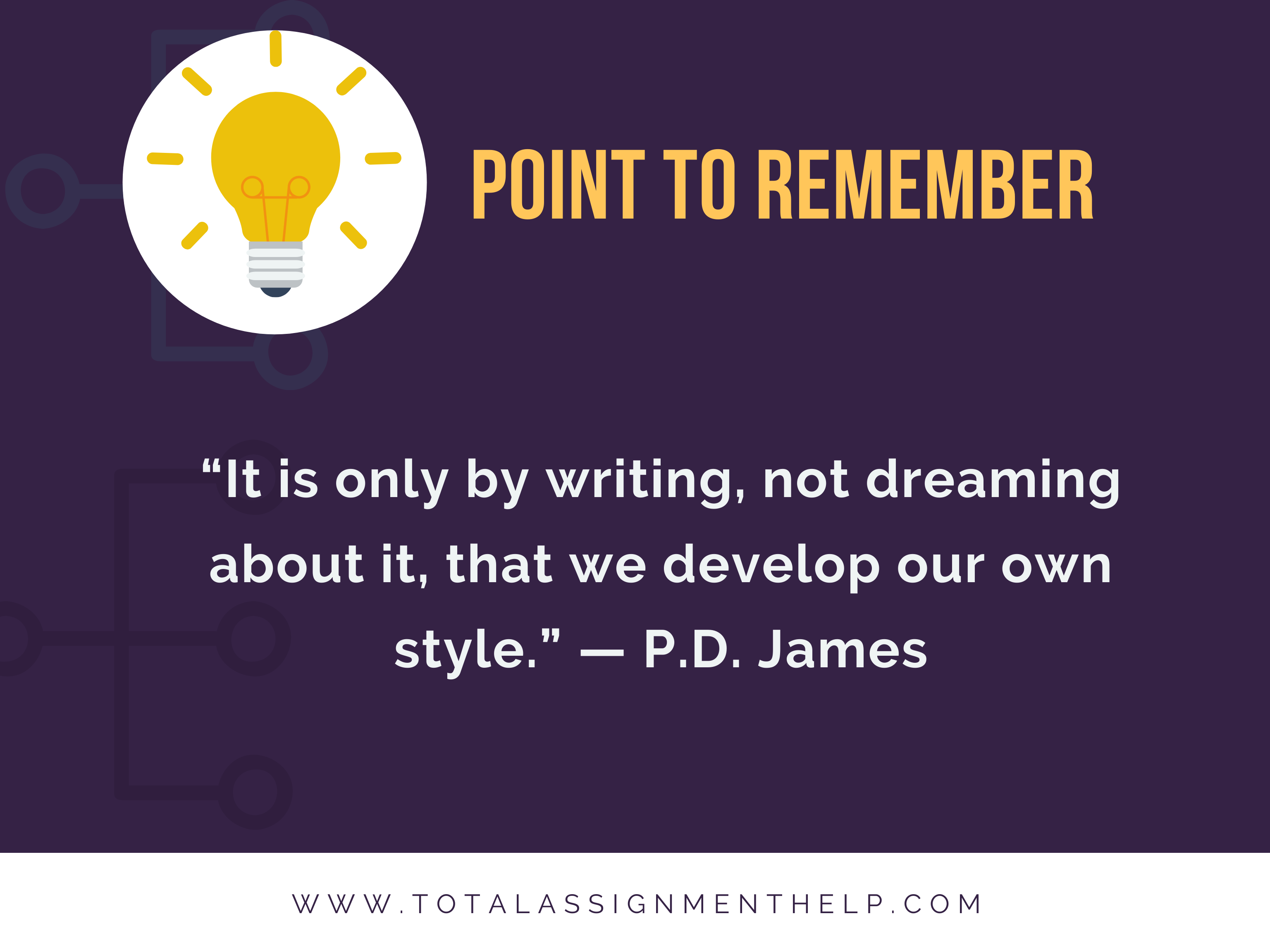Throughout the history of mankind, language and its various features and aspects have played a very crucial role. The evolution of human beings has had a great influence on language as a means of communications.
The development of mankind as civilized beings we are today would not have been possible without the help of language. Be it vocal or written form, communication allows us to express our views, thoughts, ideas and opinions with the world, and because this, in today’s world it is necessary to have the skill to communicate through verbal as well as written means.
In this article, you will find the various features and techniques which you can utilize in your life and master the skills of writing any document or speech, be it formal or informal, personal or academic, casual or business.
Subscribe our YouTube channel for more related videos
What are the language features?
The basic utility of any language feature is to help the reader to better understand the texts. A writer uses numerous language techniques and literary device to make their writing more impressive and have the best impact on the reader. Language features help you to distinguish between these techniques and simplify the text language so that it is more interpretable.
Let us look at the most important and most used language features which can help you in reading as well as writing any piece of article.
There are endless language features which you can learn, so it makes it quite cumbersome to learn about it at once. So for the sake of better understanding and retention, we have categorized language features in two categories:
- Descriptive Language: In this category, you will find the language features which are best used while describing something.
- Persuasive Language: Persuasive language features are those which help the author to use their words in such a way that it induces a thought process in the reader’s mind and helps them see what the author intends.
Descriptive Language
Let us discuss the various language features under the descriptive umbrella:
Emotive Language: This language feature is very effective as it brings about an emotional connection or evokes the mind of the reader to what the author is trying to convey. Anything can be written simply but to write in an emotive language requires a certain skill. For example:
Non-emotive version: Mr Scott was attacked by Mr Bing for a couple of minutes.
Emotive version: For what seemed a lifetime, Mr Scott was subjected to a spiteful, gutless battering by the jobless, steroid-pumped Mr Bing.
Dialogue
Dialogue can be a very powerful tool in a speech, drama, or a script. It is used by writers to carve the personality of character fictional or non-fictional. It allows the writer to deliver his opinions which he has given to the character in a narrative. It is mostly written in quotes. You may have come across several dialogues without even realising it.
Dialogues can be of two types:
- Inner Dialogue: This is a type of dialogue which a character speaks to oneself. It is an impressive feature which allows the writer to reveal the characters personality or state of mind.
- Outer Dialogue: This is a type of dialogue which you will find in a conversation among two or more characters.
Figurative Language: Many times in literature the words and sentences can have a meaning beyond their literal translations. This other meaning is called figurative. Writers use this type of language feature to add depth to their words and writings. There are several literary devices which come under the figurative language. These are:
- Simile: It is the use of similarities among things to phrase statements and highlights its emphatic nature. For Ex: “He is as clever as a fox”
- Metaphor: It is the referring of a person or things, as something else, to establish its credibility. For Ex: “She is a bright shining diamond”
- Personification: It refers to the attribution of any non-human things with human characteristics. For Ex: “The howling of wind”
- Hyperbole: It is the exaggeration of point or situation to highlight its effect. It is not to be taken literally but only as a rhetoric feature. For Ex: “I have told you a million times, not to run the lawn!”
Selection of Words: The words which are selected for a particular sentence can make a huge difference in the writing. Since in the English language, multiple words may have similar meanings, therefore it is important to choose the right words which establish the tone and follow the diction and connotation of the context of the sentence, paragraph or the whole piece of writing.
In addition to this, the writer should also keep in mind that the words used are easy to understand and doesn’t require the reader to go grab a dictionary to understand one single word. Too much-sophisticated words may cause the reader to lose interest while reading.
Colloquial Language
Colloquial language refers to the use of informal language in literature. This use of everyday language is geographical as it depends on where that particular literature article is from because different places will have a slightly different regional dialect, vocabulary and the way of talking.
Colloquialism is derived from Latin and translates to ‘conversation’ and ‘conference’. Thus while writing the author needs to keep in mind their audience and not include the words and sentence which they might difficulty in understanding. Instead, a colloquial language should be used which will be familiar to them, and hence will be much easier to comprehend.
Sound Devices
Sound devices are language features which utilise the different meanings of similar sounding words and then use that to influence the reader. These sounds devices depending on their nature may be thought-provoking, comedic or just descriptive.
The various sound devices used by writers are:
- Onomatopoeia: It is the depiction of the sounds made by something through a word. For Ex: “Rustling Leaves”, “Roaring Lion”, “Buzzing Bee”, “Splashing River” “Hoot-Hoot”, “Squeak”
- Alliteration: The repetition of a sound made by a consonant in a closely placed manner is called alliteration. For Ex: “She sells, seashells, on the seashore”, “Peter Piper picked a peck of pickled peppers.”
- Assonance: It is the repetition of a sound made by a vowel in a phrase or sentence. For Ex: “Men sell the wedding bell”, “Go and mow the lawn”
- Pun: It is an element of humour which uses the homonyms with different meanings to play on the words in the sentence. For Ex: “A horse is a very stable”, “The steaks are always high in a restaurant”
Persuasive Language
Now let us look at the various language features which can be categorised as persuasive:
Evidence: Evidence is a type of language technique that occurs in the form of paraphrases and quotes in various types of articles and texts. It is used to reassure audiences with compelling arguments.
Evidence is real information that allows the reader to form an opinion and make a judgment on something. Evidence is presented in research projects, or cited in claims in articles and publications, but is rephrased by the author or put under quotation marks.
Inclusive Language: In inclusive language, certain words are used which play the role of uniting a group of people and including everyone. For example, US, WE, OURS etc. This type of language can mostly be found in motivational speeches, and company motto and vision. Inclusive language is used by leaders and persons in charge to address a bigger number of people.
Exclusive Language: Exclusive language is used to highlight or exclude someone or a group of people. It is usually used to identify and address the enemy or any person of interest. Words such as They, Them, Those etc. are used to alienate someone from the rest of the group.
Rhetoric Language: This is a language feature which uses the rhetoric literary device to persuade the reader in thinking what the author intends. It is a tool which involves the words, sentences and questions in such a way that it automatically makes the audience think about the only logical interpretation. It may be used to hype, motivate or provoke a thought inside the audience’s mind.
Rhetoric devices are applied in our day to day lives without even paying much attention to it. Some examples of rhetoric texts are:
“Fear leads to anger. Anger leads to hate. Hate leads to suffering.” – Yoda, Star Wars: The Empire Strikes Back.
“There’s no point, is there?”
“Do you want to be a failure for the rest of your life?”
“Ask not what your country can do for you, ask what you can do for your country.” – John F. Kennedy
Imagery: Imagery is a language feature which utilises a combination of various literary devices to paint a vivid description in the reader’s mind with only words. It is similar to figurative language as it also uses elaborate descriptions to evoke the sense of sight, touch, taste, smell, and even sound.
Imagery can be categorised by the nature of its description:
- Visual: “The forest was dim and dark”
- Auditory: “The patients at the Arkham mental asylum were always screaming and shouting”
- Tactile: “The man ran his hands through the tall, snow-covered grass”
- Olfactory: “She smelled like a field full of jasmine flowers”
- Gustatory: “The sweet and juicy apple pie was everyone’s favourite”
Repetition
Repetition is the most common technique of persuasion. It involves repeating the same words or phrases to have a lasting effect on the reader’s mind. In the same way, in which a student may learn their topics during exams, repetition aims to settle the information being transferred in the subconscious mind of the reader, so that they automatically relate certain words and phrases with the meaning intended by the author.
Repetition is the most common language feature which is used in poetry among other types of writings.
For example:
“We will fight come what may, we will fight on all fronts, we will fight for a thousand years.”
“Good morning to the old, good morning to the young, good morning to every one present.”
“If you think you can do it, you can do it.”
Generalization
Generalization is a language feature in which a broad statement is said to be applicable for a large group of people or things. It widens the scope of a concept. But there are certain exceptions where this generalisation of a concept is not true. Generalization is somewhat similar to stereotyping.
We use statements of generalisation all the time in our day to life. Some examples of generalized statements are:
“All Russians like to drink Vodka”
“Dogs don’t like to bathe “
“Everyone loves chocolates”
“Homework is very tough to do”
“All rock songs are awesome!”
Formal Language
Formal language is the language of which is used to address the specific topic or a subject. The normal language of conversation or casual language can not be used in these situations. The formal language utilised the specific terminology related to the topic. It is mostly used in mathematics, computer programming, and office or business communication. It is also used in literary works such as thesis, dissertations and research paper as they all talk about a specific topic and targets an audience base which is familiar with those terms used.
The main components of formal language are:
- Full Words: The use of full words without shortening them.
- Complex terminology: Using specific and sophisticated terminology
- To the point: The text should come straight to the point
- Third-person perspective: The context is many times addressed in the third-person perspective.
Humour
Humour is a language feature whose main aim is to induce laughter in a situation or the audience. The words or statements are phrased in such a way that evokes a sense of laughter among the readers. It is a great tool of persuasion as it can be used to lighten the mood of the narrative or highlight a situation by the mocking the irony in it. Humour makes the writing stand out and mostly it makes the reader remember the whole article because the style of humour used in it. Humour as a language feature has a variety of components which can be utilised on their own or clubbed together to form an impressive meaning or implication. These components are satire, irony, sarcasm, pun, slapstick comedy, and exaggeration. It gives a pleasing effect to the writing and consequently the reader.
Using the above language features will ensure that your article or writing stands out as the most impressive one and will make sure you get the best marks, grades, critiques or reviews.

